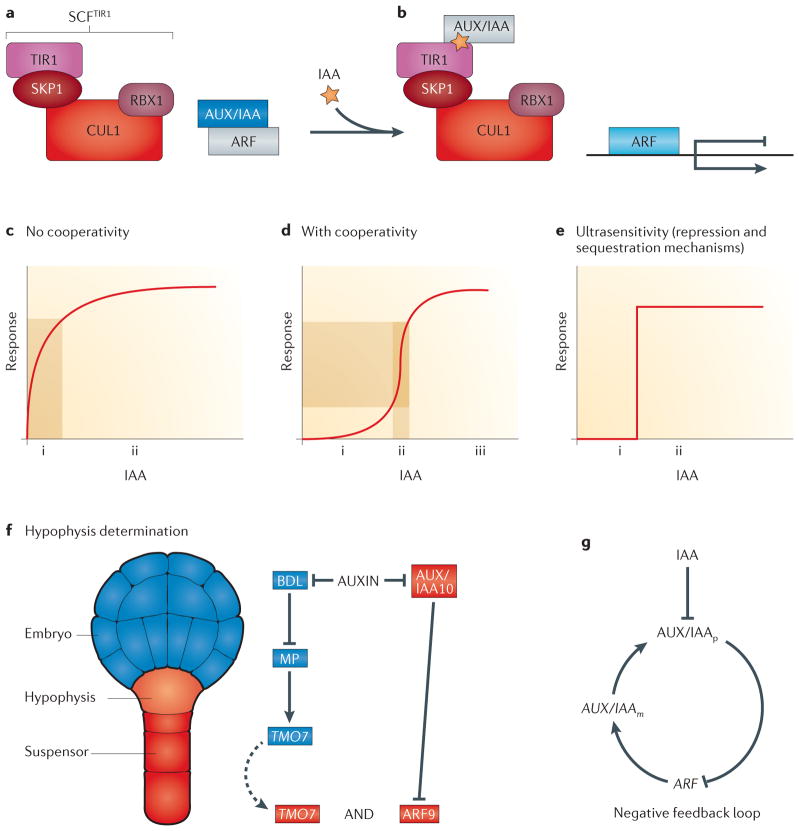Figure 5. Dynamics of auxin responses.
a | Shown on the left-hand side is a schematic of the auxin receptor complex SCFTIR1, which consists of the E3 ubiquitin-protein ligase RING-BOX PROTEIN 1 (RBX1), S PHASE KINASE-ASSOCIATED PROTEIN 1 (SKP1), CULLIN 1 (CUL1) and TRANSPORT INHIBITOR RESPONSE 1 (TIR1). On the right-hand side is a heterodimer formed of an auxin response factor (ARF) and an AUX/IAA protein. ARF and AUX/IAA are shown in an inactive form (shown in grey) or an active form (coloured). b | Auxin enhances the association of AUX/IAA with the F-box protein TIR1 within the SCFTIR1 complex, which leads to degradation of AUX/IAA. This releases ARF proteins so that they can function as transcription activators or repressors. c | The response to simple activation of a single protein by a stimulus (auxin) is shown. Minor fluctuations in auxin concentrations will immediately cause a response (i) (downstream gene expression) that rapidly reaches a steady state (ii). d | When several proteins work as a complex, the input–output graph has a Hill function shape. If hormone levels are low as a result of natural features of the system but not necessarily as a consequence of a real stimulus, the response is minimal (i). Subsequently, when sufficient amounts of auxin have accumulated owing to a true signal, gene expression can rapidly reach a steady state (iii). A desired and well-known characteristic of hormonal signalling is that the fold change in input signal is amplified (ii). e | An ultrasensitive bistable (on and off (i and ii, respectively)) response occurs when repressive mechanisms sequester a protein and release it in response to a stimulus or when the Hill coefficient is very high. These models have been generated from non-plant systems, but the concepts are applicable in this context. Two postulated network motifs in auxin signalling are shown. f | Hypophysis determination during embryogenesis is shown. A schematic structure of an Arabidopsis thaliana embryo in the globular stage is shown (left-hand side). A postulated feedforward loop during hypophysis specification is shown (right-hand side). The dashed arrow represents the movement of TARGET OF MONOPTEROS 7 (TMO7) from its site of transcription and translation in the provascular cells to the adjacent pro-hypophysis. g | A negative feedback loop motif between the AUX/IAAs and the ARFs can stabilize a system; for example, when a constant level of gene expression is required in the root tip.

